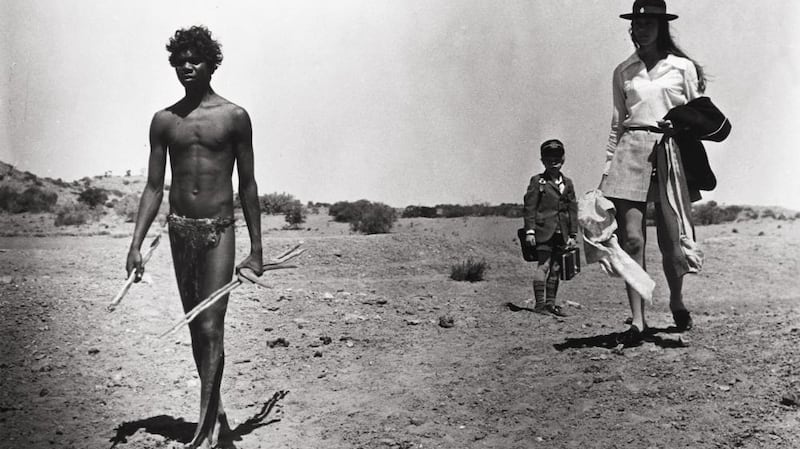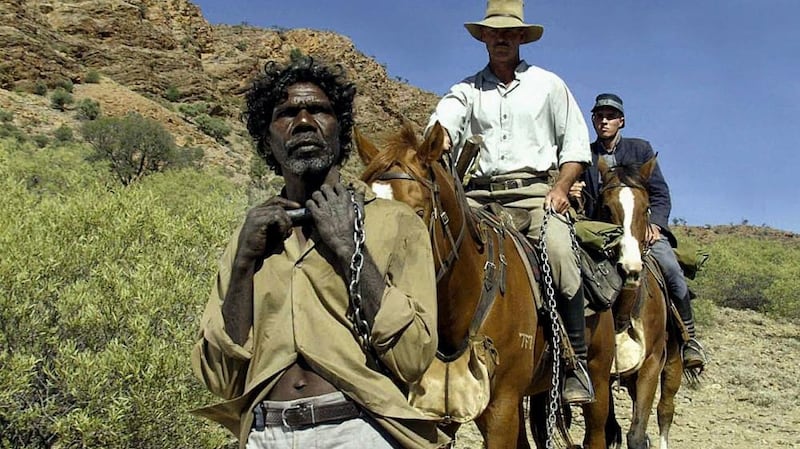Born: July 1st,1953
Died: November 29th, 2021
As the British film-maker Nicolas Roeg was scouring Arnhem Land, in Australia’s Northern Territory, in search of an Indigenous Australian man to star in Walkabout (1971), he chanced upon the 16-year-old ceremonial dancer David Gulpilil. When asked his name, the teenager responded with the only English word he knew: “Yes.” Looking back on the film in 2015, he said: “I thought I was going to be John Wayne.”
Gulpilil, who has died of cancer aged 68, was a more amorphous and mysterious presence. As if Roeg’s fragmented, free-associative storytelling was not startling enough, Gulpilil’s performance was a shock to the system for many viewers.
As the tracker who befriends a teenager (Jenny Agutter) and her young brother (played by Roeg’s son Luc) when they are stranded in the outback following their father’s suicide, he embodied an unspoiled naturalism distinct from anything else in screen acting at the time. Friends interviewed in the 2002 television documentary Gulpilil: One Red Blood insisted he was not pretending, and that he was playing his scenes, such as the powerful love dance he performs for Agutter, with unguarded sincerity.

Despite speaking no English in the film, Gulpilil conveyed meaning unhindered to audiences who would surely never have encountered anyone like him before on film. (Portrayals of Indigenous Australian characters in cinema of the time, such as the 1967 drama Journey Out of Darkness, were by actors of other ethnicities.) Which is not to say that he necessarily understood this ambiguous, poetic film. Asked by a young fan why his character hanged himself at the end, he said: “I wanna know, too!”
His range was exemplified by two very different films made in 1976: the family favourite Storm Boy, in which he helps a boy to raise pelicans, and the outlaw adventure Mad Dog Morgan, starring Dennis Hopper as a 19th-century Irish bushranger and Gulpilil as his partner in crime. Their dynamic was reproduced off-screen: it was Hopper’s hard-drinking antics that introduced the younger actor to drugs and alcohol, addictions that would blight his later life. (He was jailed in 2011 for assaulting his wife, and later entered rehab.)
Going walkabout
During the making of Mad Dog Morgan, Gulpilil disappeared from filming and had to be retrieved by Indigenous trackers. Upon his return, he explained that he had wanted to ask the kookaburras and the trees for their opinion of his co-star. “They all say Dennis is crazy,” he reported.
He was best known to international audiences for a memorable turn in the hit comedy Crocodile Dundee (1986), in which he played Neville Bell, a “city boy” who daubs himself with paint before visiting his father, a tribal elder. He nailed perfectly one of the movie’s best gags, in which he prevents a woman in the outback from photographing him. “You believe it’ll take your spirit away?” she asks. “No,” he replies. “You’ve got the lens cap on.”
Gulpilil was from the Mandhalpuyngu clan in Arnhem Land and was assigned his birth date by missionaries, who named him David. After the death of his parents, David was raised by his extended family around the missionary station in Maningrida. “I don’t know how old I am,” he said later. “I was a lost child.” He was educated at the missionary school and, steeped in his own Yolngu culture, trained as a tracker, dancer and hunter.
In the wake of Walkabout, he travelled the world. Despite his improved grasp of English, he felt frustrated at others’ inability to understand him. “The journalists came along like ants,” he said. “I tried really hard to talk to them but I cried because I couldn’t translate my language.”
Among his Australian television work was the detective series Boney (1972), in which he played several different characters as well as appearing as a dancer in the opening and closing credits. He starred with Richard Chamberlain in Peter Weir’s environmental thriller The Last Wave (1977). But he was disillusioned when the international success of Crocodile Dundee did not improve his life.
Gulpilil enjoyed a renaissance at the start of this century, starring first in Philip Noyce’s Rabbit-Proof Fence (2002) and then beginning a fruitful collaboration with the Dutch-Australian film-maker Rolf de Heer. This resulted in his first leading role, as a guide helping three white men hunt a fugitive, in The Tracker (also 2002). Both pictures were part of what De Heer called a “glorious outbreak” of Indigenous-themed cinema.

Creative spark
It was Gulpilil who suggested to De Heer the idea of making the first full-length feature conceived by, worked on and portraying the history of Indigenous Australian tribes. He also provided the creative spark by showing the director a photograph taken by the anthropologist Donald Thomson of Indigenous men forging through a swamp in bark canoes. The result, Ten Canoes (2006), was a playful shaggy-dog story about a young tribesman lusting after his brother’s wife; Gulpilil was its narrator.
He won the best actor prize in the Un Certain Regard section of the Cannes film festival for his performance in Charlie’s Country (2014), De Heer’s drama about an Indigenous man returning to the bush after feeling at odds with modern society. Other films included John Hillcoat’s brutal western The Proposition (2005), starring Guy Pearce and Ray Winstone, and Baz Luhrmann’s old-fashioned adventure Australia (2008). Hugh Jackman, his co-star on the latter, called him “one of the greatest actors Australia has ever produced”. Gulpilil also played the father of his original Storm Boy character in a 2019 remake of that film, and was the subject of an acclaimed documentary, My Name Is Gulpilil (2021), in which he reflected on his life and his lung cancer diagnosis.
His role in improving the representation of Indigenous people was beyond dispute. Before he had reached 30, he was already the subject of the Australian edition of This Is Your Life. In its closing minutes, he was asked what he wanted to achieve. “I’m not doing it only for myself but for Australia and my people and our culture,” he said. “I’m doing it for black and white to know better. That we have culture and history that still exists. I’ll keep trying.”
He married several times, and had seven children of his own, as well as several others who called him father, following the Yolngu custom.














